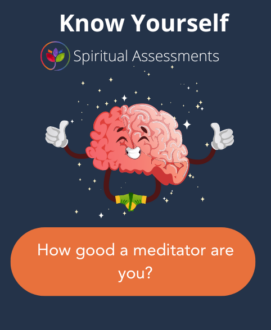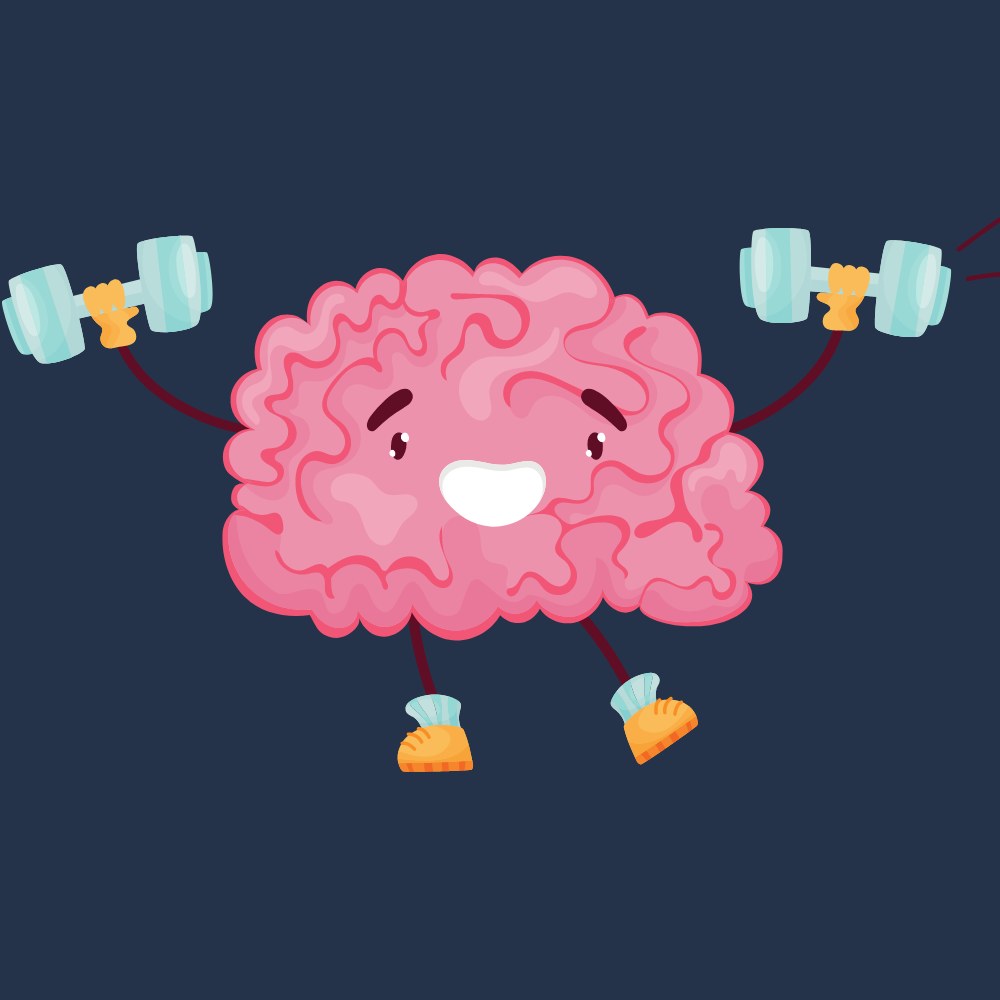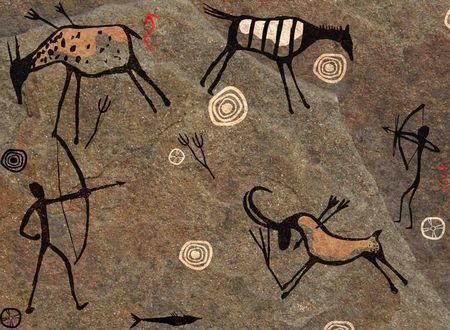Primarily there are two types of meditation: One is called concentrative meditation, also referred to as fixed attentiveness, and the other one is called contemplative meditation, also known as analytical investigation.
A good meditator is skilled at both types of meditation. It is the meditator’s ability of staying on one thought for as long as he wants that determines the quality of his meditation. An important point to remember is that meditation is a skill, it is an art. It can be learned by the determined and mastered by the persistent.
There is only one way to learn this skill, that is: practice, careful practice at that. And, there is only one way to master this art, that is: intense practice, persistent intense practice at that. Guided practice increases your chances of success multifold provided such guidance comes from a practical source, from an experienced teacher and not just a preacher, from an expert doer and not a smooth talker.
If your guide cannot sit with perfect stillness, he may offer you a wealth of bookish knowledge but will remain incapable of guiding you from a practical standpoint, much less impart any wisdom on the subtleties of meditation.
In this post, I am going to briefly explain the difference between the two types of meditation:
1. Concentrative Meditation
In this type of meditation, the meditator stills his thoughts and settles his mind on an object of concentration. Refer to the previous posts for exercises on concentration. If you want to read in detail about the practice of concentrative meditation, you can go here.
This method is specifically designed to help the practitioner achieve stillness of the body and mind. Until you are able to achieve perfect stillness, you will not be able to lose body consciousness, that is, you will continue to have a distracting awareness of your body during your sessions of meditation.
And until such time that you are able to completely rise above your body, you are not going to experience any cosmic oneness.
Until you are able to achieve perfect stillness, all your experiences are a mere intellectual fabrication. They have no intrinsic value and remain mostly meaningless. Such experiences are not replicable. They do not purify, cleanse, guide, or strengthen you.
This is the harsh truth. An intense practice of concentration stills the ten vital energies in your body helping you gain complete control of sitting still like a rock with ease.
Concentrative meditation is the first step. If you are unable to concentrate on the desired object for as long as you want, you are not ready for any contemplation or analytical investigation. Predominantly because the mind is still restless.
A restless mind is incapable of carrying out penetrating analysis with discerning wisdom. Once you master concentration, supranormal awareness and super-consciousness emerge naturally. My goal is to share with you the methods, obstacles, ways to clear them, deviations, aberrations, and various stages of this practice.
If you are truly serious about becoming a great meditator, I strongly recommend that you reread all posts under Mental Transformation so far. Do not rush; take your time.
This is the foundation. Even if you are sure that you have the message figured out, read them still. Once done, read the ones on concentration one more time. Unless you grasp the importance of those practices, you will find it hard to champion any of the different types of meditation, specifically concentrative meditation.
2. Contemplative Meditation
After you have attained ease of the body and the ability to settle your mind, anytime at will, anytime at your discretion, for however long you want, you are ready for contemplative meditation.
When practicing meditation, you will automatically gain remarkable insight into the true nature of things, the realities of different planes of existence, and into many things beyond words. Super knowledge will sprout. There is a term used in meditation texts called acala vipashayana, insight devoid of mental activity.
Monier Williams Sanskrit dictionary defines vipashaya as unfettering, or without a trace. And that is the key: when no trace of the conditioned mind is left, when you gain insight rising above your intellect, above all calculations, above logic, that is transcendental knowledge, true insight. It has come from within. It is not the product of some conditioning, agitation, or deliberation. This is the output of contemplative meditation. Let me tell you this is an advanced practice. I will shed some light on it in due course.
Stay tuned.
Peace.
Swami
Editorial Note

How do you know if you’re making progress in your meditation? You might be able to sit still, close your eyes and breathe deeply, but unless you’re feeling benefits, you might wonder why you’re doing it.
Take this free meditation assessment to find out how good a meditator you are and identify areas that need improvement.
Meditation is one of the best ways to achieve mental clarity, concentration, and relaxation. With some types of meditation, you also develop more compassion, kindness, and love for all beings. It’s a tool that people have used since ancient times as a way to reach enlightenment through self-realization. There’s a big misconception about meditation that it calms your mind. Not exactly. For effective meditation, the mind needs to be calm. For this, you first need to build your concentration. You can get started once a day for just 5 mins. Later, you can extend your sessions to up to 20 minutes twice a day. It would help if you also worked on physical fitness to sit still for even ten minutes without any physical movement. If you are new to meditation and want to comprehend how to take your first step in this direction more fruitfully, read the prerequisites!
Here are some frequently asked questions on meditation practices, their benefits, and much more.
As a beginner, how do I meditate?
You can start by observing your breath. It allows your mind to focus on something physical in the present moment instead of all the worries, distractions, or stresses in your environment. After some time just focusing and observing each inhale and exhale, letting go of those thoughts and feelings wreaking havoc on your system becomes more effortless.
As you’re letting go of these things, you’re also inducing a state of calmness within yourself—and this calmness can carry over into other parts of your life beyond meditation.
How will meditation benefit me?
Letting go of your thoughts can help improve the quality of sleep you get at night, for example, and even reduce physical symptoms like anxiety or headaches! It doesn’t mean that everyone who starts meditating will immediately feel utterly relaxed because the mind wanders, and taming the mind takes time—it may take some practice before it becomes a regular part of your life. But it’s worth noting that even if you don’t feel any immediate changes, the fact that you’re actively practicing mindfulness can help reduce stress, manage your thoughts and emotions and improve your health overall in the long run!
Meditation may also enhance your ability to focus on the task at hand, increase your sense of calm, and give you more energy, better memory, heightened creativity, higher self-esteem, and better sleep.

Light meditation, where you consciously focus on happy moments, beautiful times, a bright future, and positive visualization, can make you feel positive in minutes.
The impact of any meditation is directly proportional to its intensity, regularity, and clarity.
What are the best meditation techniques?
Some of the most popular meditation techniques focus on being mindful and living in the present moment; others are geared towards improving concentration, while some aim to bring clarity to emotions. Meditation involves relaxing deeply and focusing attention without any wandering or distraction.
There are many reasons you might choose one type over another. For example, if you’re just getting into meditating because you’ve heard such great things about them, you might find that a guided meditation with an audio track fits your needs perfectly.
A gentle breathing exercise may be best if you’re looking for something to help you fall asleep at night or an excellent way to start your morning routine. On the other hand, if you’re looking for something to help relieve anxiety or stress throughout the day, a more formal seated meditation focusing on breath might be more beneficial.
Different Types of Meditation techniques are (The most practiced): Mindfulness Meditation, Transcendental Meditation (TM), Yoga Nidra (Yogic Sleep), Zazen, Mantra Meditation, Mindfulness-based Stress Reduction (MBSR), Vipassana, Focused Attention, Open Monitoring, Loving Kindness, Kriya Yoga, Kundalini Meditation, Vipassana Meditation, Zen Meditation, Qigong, Tai Chi, Walking Meditation, Guided Meditation, and Visualization Meditation.
Meditation can be a fantastic addition to your life regardless of your goal—or even if it’s simply to develop a more peaceful mindset. The best part is that there’s no wrong way to go about it; as long as it works for you and brings a positive change into your life, that’s all that matters.
What is Mindfulness Meditation and its goal?
Mindfulness Meditation is a type of meditation technique in which you concentrate on being acutely aware of what you’re sensing and feeling in that moment, without judgment or interpretation, just with sheer awareness. It is like training that teaches you to quieten your mind and body while slowing down, racing intrusive thoughts, and letting go of negativity.
Mindfulness meditation aims to develop the capacity to observe your physical, mental, and emotional reactions without judgment or criticism. Mindfulness meditation can help people improve their focus and become more aware of their surroundings and emotions. It can also help people reduce their stress levels and become more compassionate towards themselves and others.
Breath is a crucial part of Mindfulness Meditation. Studies have shown how deep breathing helps with good sleep and lower anxiety, depression, and other mental health challenges.
Some claim many different benefits and changes come about with meditation. Here’s a fantastic guide on the effects of meditation.
What’s the best way to meditate at home and become stress-free?
Achieving inner peace can be daunting, especially if you are not used to it. Meditation is the best way to earn a stress-free living, but it can be challenging initially.
It would help if you started small to do meditation at home. If you have never meditated before, or it has been years since you last did so, you should take this opportunity to start small. Start with just five minutes in the morning to wake yourself up and set the tone for what the day holds for you.
You can find some excellent meditation apps that will guide you through these short sessions, or perhaps do some research online and find a suitable guided meditation session that will help ease you into your day and set your mind at ease. Once you get used to these short meditation sessions at home, you can increase your time spent doing so.
Next, once you have gotten used to five minutes of meditation each morning, try adding another five minutes right before bedtime. It should help prepare your mind for sleep and help calm it down after a long day of activity.
It does not matter much what type of meditation practice you are doing, it’s more about passion and commitment.
What are the benefits of Transcendental Meditation?
It is a meditation practice involving mantra repetitions and other yogic activities. The late Maharishi Mahesh Yogi developed it from India’s ancient Vedic tradition. Back in the 1960s, he introduced this technique to the United States. While practicing transcendental meditation, you must sit comfortably with your eyes closed and silently repeat a mantra.
A mantra is a word or a sound from the Vedic tradition recited to concentrate your thoughts. One can achieve various health benefits with the daily practice of transcendental meditation. Here are some of them:

- Better and more sound sleep.
- Reduced blood pressure.
- Improved memory and brain function.
- Reduced anxiety and stress.
- Better flow of good hormones.
Read these meditation quotes to feel inspired and reach your highest potential in any form of meditation.
How good is Mantra Meditation? Why?
It is one of the most followed meditation practices. According to neuroscience, mantras have a profound effect on both the mind and the body. They are repeated sounds that several neuroscientists have proved to have an impact on various elements of our lives. Therefore, chanting mantras while in meditation is very effective for concentration and focus. Here’s a complete in-depth delve into the Ancient Science of Mantras and how they can uplift your entire spiritual being.
Also, the video shared below will walk you through the whole process of Mantra Meditation in depth and detail.
Timeline of the video:
- 0:00 Start
- 1:58 Is it better to meditate for a short while in the beginning?
- 2:32 How is the Akshamala done?
- 3:24 How does practice help in one-pointed focus?
- 6:17 Why does renunciation come last in the four Varnashramas?
A GOOD STORY
There were four members in a household. Everybody, Somebody, Anybody and Nobody. A bill was overdue. Everybody thought Somebody would do it. Anybody could have done it but Nobody did it.
Don't leave empty-handed, consider contributing.It's a good thing to do today.










Comments & Discussion
11 COMMENTS
Please login to read members' comments and participate in the discussion.